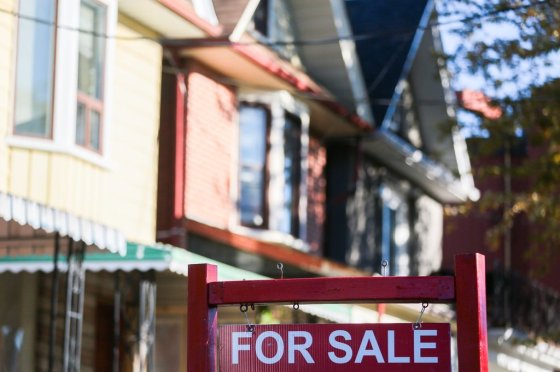|
“Value is what people are willing to pay for it.”
— John Naisbitt, author of Megatrends
Hooray — housing prices are coming down! Sort of. In some places. But housing is still unaffordable. Oh, never mind.
The Macro
The recent housing affordability report from the Parliamentary Budget Office contained some good news. OK, qualified good news.
Across the country, the gap between the housing we can reasonably afford and what housing actually costs — the so-called housing affordability gap — has narrowed significantly since housing prices peaked in 2022.
Nationally, the PBO found in August, the current benchmark house price (the average price of a comparable and typical home, as opposed to an average of all homes of all sizes) was $687,300. That’s down from a peak of $837,300 in February 2022. With interest rates down, that should be good news for buyers, yes?
Unfortunately, there are two major caveats to consider when celebrating the downward pressure on the benchmark price of housing.
First, the national figure does not account for regional disparities. In Halifax, for example, the benchmark house price remains well above the price that citizens of that city could reasonably afford. The Nova Scotia city now has the largest affordability gap in Canada. Along with Halifax, the affordability gap increased in four other Canadian cities: Montreal, Quebec City, Calgary and — wait for it — Winnipeg.
Winnipeg still has one of the smallest affordability gaps in Canada, but the recent overheated real estate market is quickly pushing prices well above what most can afford.
The second caveat is that even in those cities where the gaps have declined, the PBO said they remain well above “estimated affordable levels.” The PBO said that only Edmonton has a small enough affordability gap to claim that the cost of housing roughly matches the capacity of its citizens to buy.
So, when do we see some real relief?

A real estate sign is displayed in front of a house in Toronto in 2021. (Evan Buhler / The Canadian Press files)
The prevailing theory is that if buyers continue to show restraint and sellers begin to panic, then housing prices will drop even more. There are a number of reasons to believe that scenario will not provide much long-term relief.
Again, we’ll look at Toronto’s condo market for an indication of just how market forces on their own will do little to calm prices. In August, only 118 condos sold across the Greater Toronto Area, a 90 per cent drop from the 10-year average for the same month. Builders complain if sales remain this soft for much longer, it will negatively affect plans to add units to the market. And that would be a bad thing for housing affordability, because a rapid increase in housing stock is the number one thing policy makers believe will ultimately make it easier to own a home.
Or will it?
The kind of units builders want to add to the market are not necessarily the kind of units that homebuyers need. The benchmark price for a new condo in Toronto was just over $1 million. The Toronto Star calculated that a buyer with a 20 per cent ($200,000) down payment would be facing $4,800 per month in mortgage and other overhead costs, not including condo fees. The paper estimated that a household would need $192,000 in annual household income to afford that.
There’s little doubt that builders would want to add units to the market close to the benchmark price that is already out of reach for most buyers. Prices have moderated, but as the PBO report pointed out, not enough to make them actually affordable.
Federal Minister of Housing and Infrastructure Gregor Robertson said recently that the condo markets in cities such as Toronto and Vancouver are in “free fall” because they overbuilt small, expensive condos that are no longer marketable. The builders claim they “overbuilt” these units because that’s what people wanted at the time.
I doubt that very much. I’ve got friends in Toronto who have struggled for years to afford a decently sized condo at a somewhat reasonable price. In almost every instance, they were forced to pay more for less than they would have liked, just to get a foothold in a market that is now reportedly in “free fall.”
Advertisement
 Why this ad? Why this ad?
The solution, if you believe the federal Liberal government, is to use taxpayer money to create new, affordable rental housing. Can the federal government, with billions of dollars ready to invest, actually shift the market in a significant way? It’s a theory that has largely been unproven.
It will be a challenge for Ottawa to find a balance between incentivizing private-sector builders to create new housing that is affordable. Not impossible, but it’s never been done on a large scale in this country and thus, is missing proof of concept.
There’s one more thing to keep an eye on. Although Ottawa may make some inroads in moderating rents by introducing new, more affordable developments, it will have little impact on people who want to buy. And in markets like Ontario, where there is a glut of real estate on the market but few buyers, prices are falling.
At some point, prices and interest rates will reach a critical tipping point that will unleash a rush to buy. And that will no doubt lead to skyrocketing prices again, given that the price of a house is determined by what people are prepared to pay for it.
|

